14.1: Introduction to Persuasive Speaking
14.1.1: Defining a Persuasive Speech
Persuasive speeches aim to convince the audience to believe a certain view.
Learning Objective
Identify the qualities of a persuasive speech
Key Points
- Persuasive speeches can come in many forms, such as sales pitches, debates, and legal proceedings.
- Persuasive speeches may utilize the three modes of persuasion: ethos, pathos and logos.
- Ethos is the most important appeal in a persuasive speech.
- Factors such as body language, the willingness of the audience, and the environment in which the speech is given, all affect the success of a persuasive speech.
- Audience Analysis is important in a persuasive speech, as the audience will be convinced for their own reasons, not for the speaker’s reasons.
Key Terms
- Audience Analysis
-
the speaker’s understanding of the audience’s knowledge, personal experience, and proximity to a topic
- pathos
-
emotional appeal to the audience
- Logos
-
logical appeal to the audience; does the speaker’s argument make sense?
- persuasion
-
the process aimed at changing a person’s (or a group’s) attitude or behavior
- ethos
-
credibility of the speaker, assigned to them by the audience
Definition
A persuasive speech is a specific type of speech in which the speaker has a goal of convincing the audience to accept his or her point of view. The speech is arranged in such a way as to hopefully cause the audience to accept all or part of the expressed view. Though the overarching goal of a persuasive speech is to convince the audience to accept a perspective, not all audiences can be convinced by a single speech and not all perspectives can persuade the audience. The success of a persuasive speech is often measured by the audience’s willingness to consider the speaker’s argument.
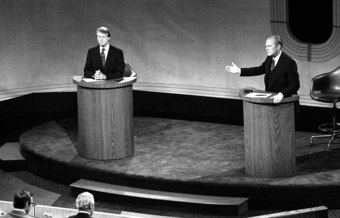
Persuasive Speech
President Gerald Ford and Jimmy Carter meet at the Walnut Street Theater in Philadelphia to debate domestic policy.
The Sales Pitch
An example of a persuasive speech is a sales pitch. During a sales pitch, the speaker is trying to convince the audience to buy his or her product or service. If the salesperson is successful, the audience (the person being sold to) will choose to purchase the product or service.
However, salespeople understand that just because someone does not make a purchase after the first sales pitch does not mean the pitch failed. Persuasion is often a process. People may need multiple persuasive pitches and a lot of outside information before they are ready to accept a new view.
Components of a Persuasive Speech
While ethos is an essential part of a persuasive speech, pathos and logos are usually combined to form the best possible argument.
While a speaker can attempt to establish ethos, or credibility, with an audience, it is ultimately assigned to them based on the audience’s perception. If the audience does not perceive the speaker as a credible source on the topic about which they are speaking, they will ultimately have a hard time considering the speaker’s argument.
The logos in a speech, or logical appeals, are arguments that present a set of information and show why a conclusion must rationally be true. For example, arguments heard in court are logical arguments.
Pathos, emotional appeals, are appeals that seek to make the audience feel a certain way so that they will accept a conclusion. Negative political ads, for example, often incorporate emotional appeals by juxtaposing an opponent with a negative emotion such as fear.
How to Succeed
Using an attention grabbing device is a powerful way to begin a persuasive speech. If you can make your audience laugh, think about a personal experience, or tell an anecdote that produces emotion, they are more likely to listen to the content of your argument. Additionally, keeping a speech within 6-8 minutes makes the audience less likely to let their mind wander away from what you are saying.
The effectiveness of a persuasive speech also depends on factors beyond the words of the speech. The willingness of the audience to accept a new view, the body language of the speaker, and the environment in which the speech is given all can affect the success of a persuasive speech.
A successful speaker will do their best to establish strong ethos with their audience, and combine pathos and logos to form the best possible argument. Audience analysis is an important factor when giving a persuasive speech. For example, if a speaker is trying to convince the audience not to tell their children about Santa Claus, using arguments that relate and resonate with them, such as encouraging them to remember how they felt when they discovered he wasn’t real, will be more successful than if the speaker shared a negative personal experience of their own.
14.1.2: The Goals of a Persuasive Speech: Convincing, Actuation, and Stimulation
Persuasive speeches can be designed to convince, incite action, or enhance belief by the audience.
Learning Objective
Define the three goals of a persuasive speech
Key Points
- Convincing speeches aim to get the audience to change their mind to accept the view put forth in the speech.
- Actuation speeches seek to incite a certain action in the audience.
- Stimulation speeches are designed to get an audience to believe more enthusiastically in a view.
Key Terms
- stimulation
-
An activity causing excitement or pleasure.
- actuate
-
To incite to action; to motivate.
- convince
-
To make someone believe, or feel sure about something, especially by using logic, argument or evidence.
The overall goal of a persuasive speech is for the audience to accept your viewpoint as the speaker. However, this is not a nuanced enough definition to capture the actual goals of different persuasive speeches. Persuasive speeches can be designed to convince, actuate, and/or stimulate the audience.
Convincing
A convincing speech is designed to cause the audience to internalize and believe a viewpoint that they did not previously hold. In a sense, a convincing argument changes the audience’s mind. For example, suppose you are giving a persuasive speech claiming that Coke is better than Pepsi. Your goal is not just for the audience to hear that you enjoy Coke more, but for Pepsi lovers to change their minds.
Actuation
An actuation speech has a slightly different goal. An actuation speech is designed to cause the audience to do something, to take some action. This type of speech is particularly useful if the audience already shares some or all of your view. For example, at the end of presidential campaigns, candidates begin to focus on convincing their supporters to actually vote. They are seeking to actuate the action of voting through their speeches .

Actuation
Political candidates use actuation speeches so that their supporters will cast their votes.
Stimulation
Persuasive speeches can also be used to enhance how fervently the audience believes in an idea. In this instance, the speaker understands that the audience already believes in the viewpoint, but not to the degree that he or she would like. As a result, the speaker tries to stimulate the audience, making them more enthusiastic about the view. For example, religious services often utilize stimulation. They are not trying to convince those of another religion to switch religions necessarily; there is an understanding that the congregation already accepts part or all of the religion. Instead, they are trying to enhance the degree of belief.
14.1.3: Persuasive vs. Informative Speaking
Informative and persuasive speeches differ in what they want the audience to walk away with: facts or an opinion.
Learning Objective
Differentiate between informative and persuasive speeches
Key Points
- Informative speeches (or informational speeches) seek to provide facts, statistics, or general evidence. They are primarily concerned with the transmission of knowledge to the audience.
- Persuasive speeches are designed to convince the audience that a certain viewpoint is correct. In doing so, the speaker may utilize information.
- Informative and persuasive speeches are exemplified by academic lectures and sales pitches, respectively.
Key Term
- informative
-
Providing knowledge, especially useful or interesting information.
Informative (or informational) and persuasive speaking are related, but distinct, types of speeches. The difference between the two lies in the speaker’s end goal and what the speaker wants the audience to leave with.
Informative speeches are probably the most prevalent variety of speech. The goal is always to supply information and facts to the audience. This information can come in the form of statistics, facts, or other forms of evidence. Informational speeches do not tell people what to do with the information; their goal is for the audience to have and understand the information. Academic lectures are often informational speeches, because the professor is attempting to present facts so the students can understand them.
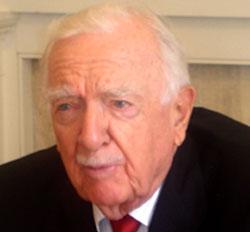
Informative Speeches
Journalists, like Walter Cronkite, generally use informative speeches to inform their viewers about news events.
Informational speeches may have a tendency to become overdrawn and boring. Their goal is not to excite the audience members, but rather to provide them with knowledge they did not have before the speech.
Like informational speeches, persuasive speeches use information. However, persuasive speeches are designed for the audience to not only hear and understand the information, but to use it to be convinced of a viewpoint. The end goal of a persuasive speech is not for the audience to have information, but rather for them to have a certain view. Persuasive speeches may use some of the same techniques as informational speeches, but can also use emotions to convince the audience. A sales pitch is one example of a persuasive speech.
A common cry against certain persuasive speeches is that they rely too much on emotion and not enough on facts. A persuasive speech that succeeds in convincing the audience to accept a view but is based on faulty or misleading information is unethical.
14.1.4: The Psychology of Persuasion
Each individual is persuaded by different things over different time-periods, so to be effective each pitch must be customized.
Learning Objective
Explain the two psychological theories of persuasion
Key Points
- Each person is unique, so there is no single psychological key to persuasion.
- Cialdini proposed six psychological persuasive techniques: reciprocity, commitment and consistency, social proof, authority, liking, and scarcity.
- The Relationship Based Persuasion technique has four steps: survey the situation, confront the five barriers to a successful influence encounter, make the pitch, and secure the commitments.
Key Terms
- social proof
-
People tend to do things that they see others are doing.
- reciprocity
-
the responses of individuals to the actions of others
There is no single key to a successful persuasive speech. Some people take longer than others to be persuaded, and some respond to different persuasion techniques. Therefore, persuasive speakers should be cognizant of audience characteristics to customize the pitch.
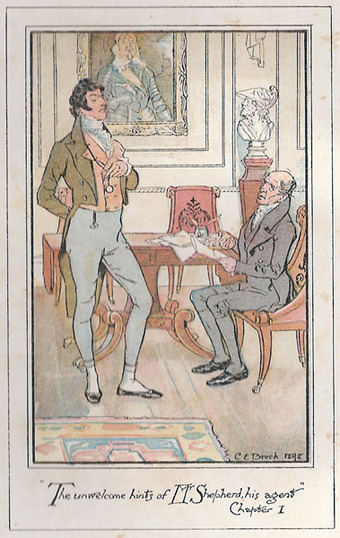
Persuasion
A persuasive speech is given with the goal of influencing how the audience thinks about a certain topic.
The psychology of persuasion is best exemplified by two theories that try to explain how people are influenced.
Robert Cialdini, in his book on persuasion, defined six “weapons of influence:”
- Reciprocity: People tend to return a favor. In Cialdini’s conferences, he often uses the example of Ethiopia providing thousands of dollars in humanitarian aid to Mexico just after the 1985 earthquake, despite Ethiopia suffering from a crippling famine and civil war at the time. Ethiopia had been reciprocating for the diplomatic support Mexico provided when Italy invaded Ethiopia in 1937.
- Commitment and Consistency: Once people commit to what they think is right, they are more likely to honor that commitment even if the original motivation is subsequently removed. For example, in car sales, suddenly raising the price at the last moment works because buyers have already decided to buy.
- Social Proof: People will do things they see other people are doing. In one experiment, if one or more person looked up into the sky, bystanders would then look up to see what they could see. This experiment was aborted, as so many people looked up that they stopped traffic.
- Authority: People will tend to obey authority figures, even if they are asked to perform objectionable acts. Cialdini cites incidents like the Milgram experiments in the early 1960s and the My Lai massacre in 1968.
- Liking: People are easily persuaded by other people whom they like. Cialdini cites the marketing of Tupperware, wherein people were more likely to buy from others they liked. Some of the biases favoring more attractive people are discussed, but generally more aesthetically pleasing people tend to use this influence over others.
- Scarcity: Perceived scarcity will generate demand. For example, saying that offers are available for a “limited time only” encourages sales.
The second theory is called Relationship Based Persuasion. It was developed by Richard Shell and Mario Moussa. The overall theory is that persuasion is the art of winning over others. Their four step approach is:
- Survey your situation: This step includes an analysis of the persuader’s situation, goals and challenges.
- Confront the five barriers: Five obstacles pose the greatest risks to a successful influence encounter – relationships, credibility, communication mismatches, belief systems, and interest and needs.
- Make your pitch: People need a solid reason to justify a decision, yet at the same time many decisions are made on basis of intuition. This step also deals with presentation skills.
- Secure your commitments: In order to safeguard the longtime success of a persuasive decision, it is vital to deal with politics at both the individual and organizational level.
14.1.5: The Ethics of Persuasion
Persuasion is unethical if it is for personal gain at the expense of others, or for personal gain without the knowledge of the audience.
Learning Objective
Discuss the qualities that assure that persuasion is ethical
Key Points
- Methods such as torture, coercion, and brainwashing are always unethical.
- Ethical persuasion has three components: the exploration of the other person’s viewpoint, the explanation of your viewpoint, and the creation of resolutions.
- Tests such as the TARES test and the Fitzpatrick & Gauthier test are used to determine if a persuasion attempt is ethical.
Key Term
- coercion
-
Use of physical or moral force to compel a person to do something, or to abstain from doing something, thereby depriving that person of the exercise of free will.
Ethics of Persuasion
Not all persuasion is ethical. Persuasion is widely considered unethical if it is for the purpose of personal gain at the expense of others, or for personal gain without the knowledge of the audience. Furthermore, some methods of persuasion are wholly written off as unethical. For example, coercion, brainwashing, and torture are never considered ethical .
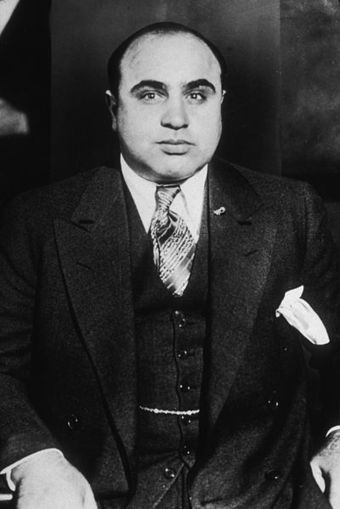
Understanding Ethics
Al Capone, an American gangster in the early 20th century, used coercion as a persuasive technique, which isn’t ethical.
Barring any of the persuasive methods that are easily distinguished as unethical (such as torture), the line between ethical and unethical is less clearly demarcated. Ethical persuasion has a series of common characteristics that are missing in unethical persuasion. Ethical persuasion seeks to achieve the following three goals:
- Explore the other person’s viewpoint
- Explain your viewpoint
- Create resolutions
Notably, this approach involves input from the audience and an honest explanation of your viewpoint. If you have questions about the ethics of a persuasive attempt, there are a number of tests that can be done.
TARES Test
Sherry Baker and David Martinson proposed a five-part TARES test to help guide the PR practitioner to define ethical persuasion. An ethical persuasive speech must have all of the following components:
- Truthfulness of the message
- Authenticity of the persuader
- Respect for the audience
- Equity of the persuasive appeal
Fitzpatrick & Gauthier
Fitzpatrick and Gauthier developed a series of questions that must be honestly answered to determine how ethical a pitch is:
- For what purpose is persuasion being employed?
- Toward what choices and with what consequences for individual lives is persuasion being used?
- Does the persuasion in this case contribute to or interfere with the decision-making process for its target audience?
14.2: Types of Persuasive Speeches
14.2.1: Persuasive Speeches on Questions of Fact
Speeches about question of fact (something is true, exists, or does not exist) propose that the speaker’s view is probably true.
Learning Objective
Explain how to present evidence to prove that a fact is true
Key Points
- Questions of fact contrast with questions of policy (which state that something should be) and questions of value (which state that something is good, bad, beautiful, or worthwhile).
- Three basic types of questions of fact are historical controversy, questions of current existence, and predictions.
- The speaker presents competing evidence in topical order and uses inductive reasoning to draw a conclusion from the evidence. The conclusion asserts that the speaker’s view is most likely true.
- The speaker has an ethical responsibility to provide reliable, valid evidence to the audience, and to be aware of and avoid bias in the selection of the evidence.
Key Term
- evidence
-
The available body of facts or information indicating whether a belief or proposition is true or valid.
Example
- To persuade an audience that the Loch Ness monster exists, a speech could cover unexplained sightings, factual evidence that many of the sightings cannot be explained, and collected testimony from people who have seen the Loch Ness monster and scientists who have studied the claims.
Questions of fact are one focus of persuasive speaking. They propose that something is a fact. Questions of fact (which are also called propositions of fact) basically state that something is, something exists, or something doesn’t exist. Questions of fact contrast with questions of policy, which state that something should be, and questions of value, which state that something is good, bad, beautiful, or worthwhile.
In a persuasive speech, the speaker answers a question by proposing an answer and attempting to convince the audience that the answer is true and that they can believe the speaker. In essence, the speaker wants to audience to accept the his or her view as the cold, hard facts.

Asking Questions
In a persuasive speech, the speaker will ask and answer questions with facts in order to convince the audience that the facts are true.
The following are three basic types of questions of fact:
- Historical controversy: Knowledge that an event did happen in the past or that an object actually did exist.
- Questions of current existence: Knowledge that something is happening now in the present (such as global warming).
- Predictions: Forecasting what will happen in the future. Based on past events, the speaker identifies a pattern and attempts to convince the audience that the event will happen again. For example, if someone observes that gasoline prices drop right before national elections, he or she could attempt to convince others that they will drop again before the next election.
Creating a Persuasive Speech on Questions of Fact
When creating a persuasive speech based around questions of fact, consider the following:
Thesis: When developing a persuasive speech, begin with a thesis that states that something is true, meaning that it happened or did not happen. exists or does not exist.
Organization and Evidence: In general, the evidence should be presented in topical order. It is important to consider the evidence carefully. The speaker must ask if it is possible that the observations actually occurred or could have occurred. Are the source of the evidence reliable, and were they in a position to actually observe what they reported? Is there reason to believe that a source may be biased, either personally or by the thinking prevalent at the time in history?
Reasoning: The speaker will usually be dealing with inductive reasoning, in which he or she asks the audience to agree with a conclusion after presenting all of the evidence. The speaker proves the position by presenting compelling evidence to support the thesis.
Ethics: As a speaker you have an ethical responsibility to provide reliable, valid evidence to the audience and be aware of and avoid your own bias in the selection of the evidence which you use.

Loch Ness Monster
The existence of the Loch Ness Monster is a question of fact.
14.2.2: Persuasive Speeches on Questions of Value
In persuasive speeches on questions of value, we argue something is right or wrong, moral or immoral, or better or worse than another thing.
Learning Objective
Define a persuasive speech of value
Key Points
- Persuasive speeches on questions of value imply certain actions, but they are not a call to action.
- Persuasive speeches of value depend on a judgement that something is right or wrong, moral or immoral, or better or worse than another thing.
- The speech should include an appeal, criteria for judgement, and facts that support the appeal using the judgement criteria.
Key Term
- policy
-
A principle of behavior, conduct, etc., thought to be desirable or necessary, especially as formally expressed by a government or other authoritative body.
Example
- “To persuade my audience that it is wrong to drive over the speed limit. ” “To persuade my audience that Pepsi is better than Coke. ” “To persuade my audience that it is better to live together before marriage. ” “To persuade my audience that swimming is the best form of exercise. ” “To persuade my audience that bikes are the best form of transportation to get around town. “
Introduction
There are three types of persuasive speeches:
- Persuasive speeches of fact
- Persuasive speeches of value
- Persuasive speeches of policy
In this unit, our focus will be on persuasive speeches of value. Here is where we argue something is right or wrong, moral or immoral, or better or worse than another thing. The appeals are made on value judgements .
Examples include speeches that attempt to persuade the audience that it is wrong to drive over the speed limit, that Pepsi is better than Coke, that it is better to live together before marriage, that swimming is the best form of exercise, or that bikes are the best form of transportation to get around town.
Persuasive speeches on questions of value imply certain actions, but they are not a call to action.
Questions to Ask Yourself
When analyzing any type of persuasive speech, you should ask yourself the following questions:
- What is the speaker’s goal?
- What are the main points?
- How does the structure of the speech help the speaker to make the argument?
- How does the speaker try to make you care?
- How does the speaker use evidence?
- What kinds of sources does the speaker use?
Creating a Persuasive Speech on Questions of Value
How should you go about creating such a speech?
- Introduce appeals, information, and criteria.
- Provide evidence that makes your audience arrive at your conclusion. (Your claims should agree with the current beliefs and feeling of your audience. )
- Use facts to justify your claims.
- Consider your audience’s feeling and values.

Pepsi vs. Coke
Persuading the audience that Pepsi is better than Coke is a question of value speech, as it hinges on a value judgement.
14.2.3: Persuasive Speeches on Questions of Policy
Persuasive speeches about questions of policy advocate for or against the status quo.
Learning Objective
Demonstrate how to structure a persuasive speech on a question of policy
Key Points
- There are four basic organizational patterns for question of policy: problem-solution, problem-solution with cause, comparative advantage of solutions, and Monroe’s motivated sequence.
- Problem-solution considers the need (or the problem to be solved), the plan (or the solution to the problem), and the practicality (how well the solution will work).
- Problem-solution with causes considers the nature and extent of the problem and the direct relationship between the problem and its causes, and uses the causes as criteria to evaluate potential solutions.
- Comparative advantages of solutions summarizes the problem briefly, compare different solutions to find the one that solves the most aspects of the problem, and ask the audience to accept and implement the most advantageous solution.
- Monroe’s motivated sequence is Attention, Need, Satisfaction, Visualization, and Action.
Key Terms
- Monroe’s Motivated Sequence
-
A method of persuasion developed by Alan H. Monroe, based on establishing a psychological need for action in the audience and demonstrating how to satisfy the need by taking action.
- status quo
-
The state of things; the way things are, as opposed to the way they could be.
- policy
-
A principle of behavior, conduct, etc., thought to be desirable or necessary, especially as formally expressed by a government or other authoritative body.
Questions of Policy
One focus of persuasive speaking is questions of policy, which advocates a change from the status quo, or the way things are today. There is a “should”, or at least an implied “should”, in the thesis statement. The speaker wants the plan proposed by the speech to become policy. Questions of policy contrast with questions of fact, which state than something is, exists or does not exist, and questions of value, which state that something is good, bad, beautiful, or perhaps worthwhile.

Rubik’s Cube
Organizing a persuasive speech is like solving a puzzle, all of the speaker’s points must be aligned correctly.
The following sections describe some different ways to organize persuasive speeches around questions of policy.
Problem-Solution
One way to organize a persuasive speech on a question of policy focuses on defining a problem and a solution by covering three basic points:
- The Need: Convince the audience that there is a problem that must be addressed or a need for change. It is essential to get the audience to believe that a problem exists so they will implement a plan for a solution.
- The Plan: Convince the audience that it is not good enough to just sit around and complain. Tell them what actions they must take. Be sure to address any aspects of the solution that might make the audience less willing to act.
- The Practicality: Show the audience that the plan can succeed. Address the implications, cite expert testimony, and reference the successful implementation of similar plans in other places.
Problem-Solution with Cause
A common variation on the problem-solution organization includes consideration of the causes. Discussing the causes of the problem directs attention to specific points that the solution must address. The basic points of this organization are:
- The Problem: Describe the nature and extent of the problem. Specifically, describe that the problem exists and how important or big the problem is.
- The Causes: Consider the direct relationship between the problem and its causes. Think about the problem as an “effect,” and consider the causes that produced the effect. Show a direct relationship between the problem and causes, not just a correlation where one thing occurred before, after, or at the same time as another.
- The Solution: Use the causes as criteria to evaluate the solutions. If the speech says that the problem was caused by x, y and z, then the solution or new policy needs to address x, y, and z in order to solve the problem.
Comparative Advantages of Solutions
When the audience is already aware of and accepts that there is a problem, the speech can focus primarily on comparing the advantages of one solution over another, as follows:
- Summarize the Problem Briefly: Do not focus on convincing the audience to believe that there is a problem that needs to be solved.
- Compare Different Solutions: Discuss different solutions, and find the one that solves the most aspects of the problem. Compare one solution with others to select and propose the best to the audience.
- Final Appeal: Ask the audience to accept and implement that solution as the policy.
Monroe’s Motivated Sequence
Another powerful method of structuring a persuasive message is by using a motivated sequence. The organizational plan developed by Alan Monroe focuses on developing a psychological need in the audience and then illustrating how to satisfy that need by supporting the plan or policy advocated in the speech, as follows:
- Attention: Get the audience’s attention using a detailed story, shocking example, dramatic statistic, or quotations.
- Need: Show how the topic applies to the psychological need of the audience members. The premise is that action is motivated by audience needs. Go beyond establishing that there is a significant problem; show that the need will not go away by itself. Convince the audience members that they each have a personal need to take action.
- Satisfaction: Solve the issue. Provide specific and viable solutions that the government or community can implement.
- Visualization: Tell the audience what will happen if the solution is or is not implemented. Be visual and detailed. Paint a picture for the audience of what they will experience and what the world will look like when the need is satisfied through the speech’s plan.
- Action: Tell the audience members what specific action they can take to solve the problem and change existing policy.
The advantage of Monroe’s motivated sequence is that it emphasizes what the audience can do. Too often, the audience feels like a situation is hopeless; Monroe’s motivated sequence emphasizes the actions the audience can take.
14.3: Sample Persuasive Speech
14.3.1: Sample Persuasive Speech
Persuasion encourages a person to behave in a certain manner, or embrace a point of view related to specific values, attitudes, and beliefs.
Learning Objective
Identify the strengths of Eisenhower’s persuasive speech about military spending
Key Points
- Most persuasive speeches are based on policies that require the acknowledgement and support of governments, public bodies, and constituents.
- President Eisenhower takes a clear stance against increased military spending, and attempts to change the audience’s attitudes and beliefs by drawing comparisons.
- Ending with a strong conclusion that restates the argument and main points, or proposes a call-to-action as Eisenhower does in “Chance for Peace,” is another tool used in persuasive speaking.
- Ending with a strong conclusion that re-states the argument and main points, which illustrate the drawbacks of corn ethanol production, is another persuasive tool used in the sample speech.
Key Terms
- constituent
-
A resident of a place represented by an elected official.
- simile
-
A figure of speech in which one thing is compared to another, in the case of English generally using like or as.
Sample Speech: Persuasive Speaking
The main purpose of persuasive speaking is to change, reinforce, or instill the attitudes, beliefs, and values of the audience. There are no formal rules on what topics, formats, or viewpoints qualify as persuasion. However, most persuasive speeches are based on policies that require the acknowledgement and support of governments, public bodies, organizations, and constituents .
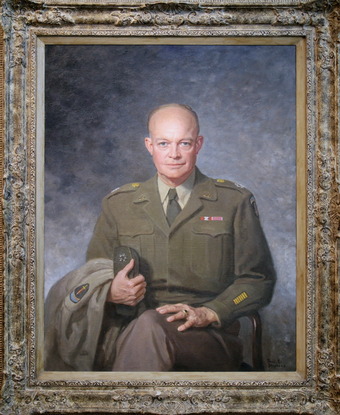
Power of Persuasion
President Eisenhower attempted to change prevailing attitudes on the cost of an arms race in his speech “Chance for Peace.”
Just three months into his presidency, U.S. President Dwight D. Eisenhower delivered the speech entitled “Chance for Peace” on April 16th, 1953. The speech was given shortly after the death of Soviet dictator Joseph Stalin. In his speech, Eisenhower likened arms spending to stealing from the people, using similes, and spoke against increased military spending in spite of continued tensions and rivalry with the Soviet Union.
The following is an excerpt from Eisenhower’s address:
Every gun that is made, every warship launched, every rocket fired signifies, in the final sense, a theft from those who hunger and are not fed, those who are cold and are not clothed.
This world in arms is not spending money alone. It is spending the sweat of its laborers, the genius of its scientists, the hopes of its children. The cost of one modern heavy bomber is this: a modern brick school in more than 30 cities. It is two electric power plants, each serving a town of 60,000 population. It is two fine, fully equipped hospitals. It is some fifty miles of concrete pavement. We pay for a single fighter with a half-million bushels of wheat. We pay for a single destroyer with new homes that could have housed more than 8,000 people. . . . This is not a way of life at all, in any true sense. Under the cloud of threatening war, it is humanity hanging from a cross of iron.
Eisenhower attempted to sway his audience by describing what was at stake–exorbitant spending, wasted worker talent, unsafe borders–if the United States pursued an arms race. Although his speech is often described as one of the greatest persuasive speeches of modern times, the large peacetime military budgets established during his administration have continued for half a century.
You can listen to the full audio of Eisenhower’s speech here:
